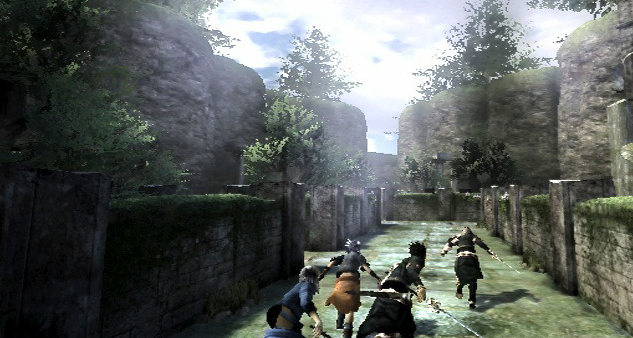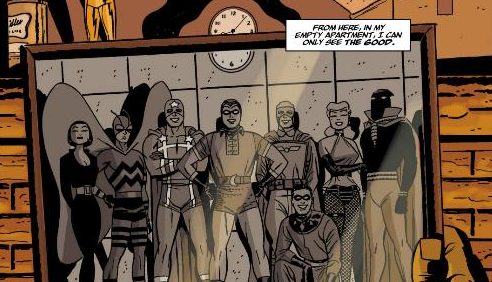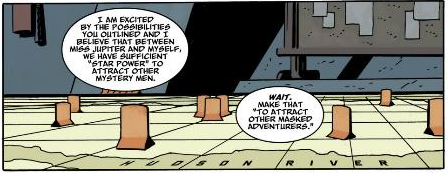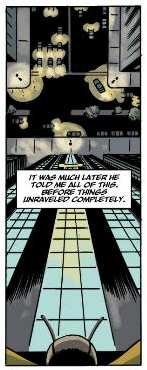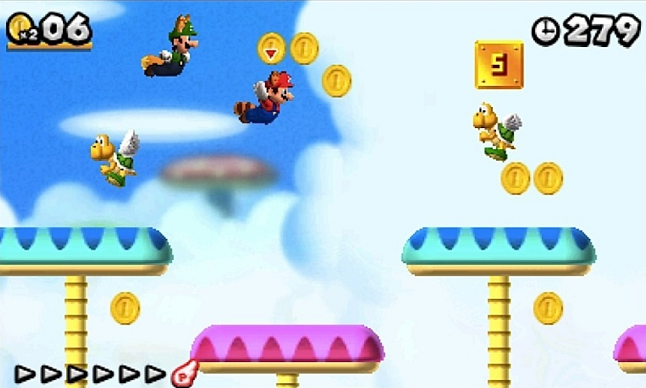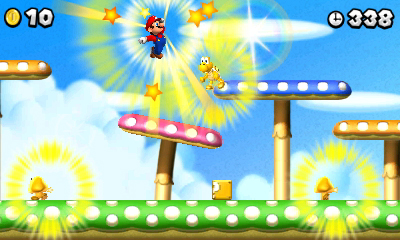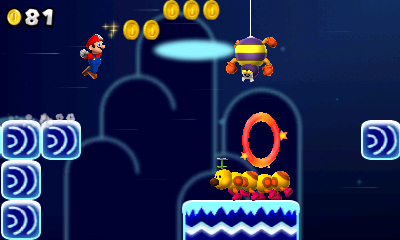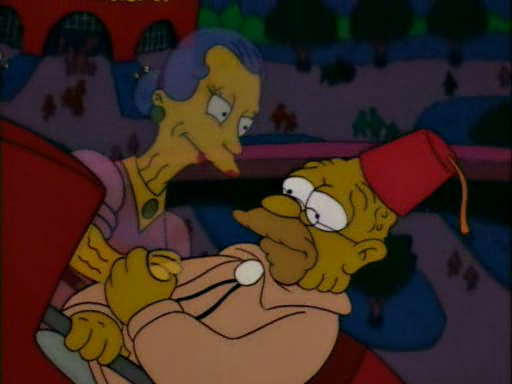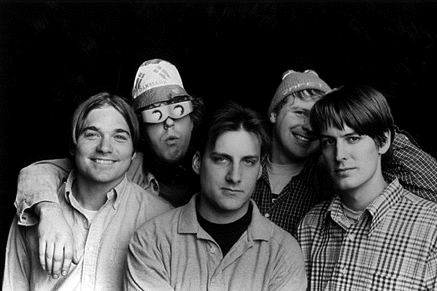
Noiseless Chatter Advisory: Ben, of Ben Likes Music, likes music. He also wrote this, and hopefully more in the future. Please give a big welcome to our latest guest author. Or call him obscene things. It’s really up to you.
It only occurred to me relatively recently that the word fan was just a shortened version of fanatic. I’m 34 years old. Understandably, a lot of you reading this may have just snorted your Starbucks out of your nose at my incredible naivety, but so be it. When it comes to Pavement however, I do believe that I am indeed more of a fanatic than a fan. A fan – in my short-sighted eyes that are well into their fourth decade – is someone who has a passing interest in something; someone who will wave from the touchlines and not really care too much what is going on. A fanatic however, is someone like me. Someone who scours record stores and internet auction sites for an EP from 1989 and pays way over the odds for a record that has a B-side that has a slightly different mix to what was on the re-release 20 years later. That, my friends, is a fanatic.
Firstly, I must thank my good friend Mat Hurley. Not exactly the most inflated of name checks I’m sure you’ll agree, but one of my best friends who I have known for over thirty years is the person who is to blame/thank for my love of this band. In 1992, when a Sony Walkman was still considered the height of technology, he passed me over a tape (a tape!) of a band called Pavement. This tape was called Slanted and Enchanted which he had recently purchased from the only independent record store within a 30 mile radius of our homes. I had learned to trust him simply due to the fact that a week before, he had passed me an album by a band called Pixies entitled Doolittle which I had pretty much been playing non-stop on my walk home from school that entire week. I’ve never known what became of them.
To me, Slanted… was a grower. I listened to the first few tracks and thought “Meh…” (and this, ladies and gentlemen was a good 10 years before ‘meh’ was even invented). “Summer Babe” left me intrigued, but not inspired but I listened on. I finally got to track five, which was called “Conduit For Sale.” Never before had I heard anything so raw, so energised and it had me hooked immediately. I must have pressed rewind a dozen times before even getting to “Zurich Is Stained,” which was a mistake in itself given its obvious greatness in comparison. Twenty years on, and I realise that “Conduit…” is an obvious rip-off *ahem* I mean, homage to a song by The Fall – namely “New Face In Hell” should you wish to check my credentials as a music analyst – go ahead and compare and contrast. But still, a grower is a grower and now almost 20 years to the day since my ears were introduced to this lo-fi racket straight outta California it still sits there, proudly awaiting a further outing into my eardrums and it has certainly stood the test of time.
Little did I know when Slanted… was released, that only a month before, Pavement had released an album of bits and bobbins from their prior EPs; at least they had in the UK. It was called Westing (By Musket and Sextant) and was choc-full of ridiculous oddities – many under two minutes long – consisting of 90% feedback and 10% melody and all played in a ludicrous fashion. It might not sound particularly attractive to an outsider, but I lapped it up. Given that for the previous few years I had been listening to the relatively polished production of albums by bands such as The Stone Roses and Ned’s Atomic Dustbin, this was a breath of fresh, lackadaisical air. On Westing… Pavement stumble and fumble their way through tracks that wouldn’t even be considered a D-sides by other bands and yet I and their now considerable fan base wouldn’t have it any other way. Listening to these songs now, it is obvious that they could be better rendered in a decent studio but they would lose all of their lustre and excitement if that were the case. I still challenge anyone to give me a complete set of lyrics to “Forklift” and even if they did I challenge them further to make any sense of them. I offer my brother in return; he’s very friendly and makes a mean Chicken Tikka Massala.

Then I have a little confession to make, Faith No More released Angel Dust and I was under their spell for quite some time. Even when the next Pavement record – Crooked Rain, Crooked Rain came out in February 1994, I was still wandering around the halls of my school murmuring the guttural lyrics to “Mid-Life Crisis” and although I purchased it the second it came out, it barely came out of its plastic sleeve until Messrs Patton, Bordin, Gould, Martin and (tee-hee) Bottum descended into obscurity and started sacking and hiring guitarists willy-nilly.
So once I gave it a listen, I was horrified. What was this seemingly well produced bunch of songs from the kings of lo-fi? Granted it was never going to challenge Vangelis or Mike Oldfield for over-production but this was such a departure from Slanted… – how was this going to work? Essentially, it didn’t. To this day, I have never been able to get into their sophomore record proper. The songs, had they been recorded in the style of Slanted… or Westing… or somewhere in between would no doubt have been world-beaters, but there was something that didn’t feel quite right. Even though I’d been unfaithful to them by ploughing through three copies of Angel Dust in the intervening 18 months, I still felt no guilt or remorse. Are they the same things? Feel free to clear that up by emailing me and hurling abuse at me.
So that was that? No, of course not; silly me; Pavement was just about to unleash their greatest record on the listening public. As I had grown out of receiving chocolate eggs with a jigsaw puzzle inside for Easter, I had asked my mother to accompany me to my local record shop and purchase Wowee Zowee instead. I looked at the track listing and the first thing that occurred to me was the number of short songs on there. Over half of the songs were under two and a half minutes and I couldn’t have been more thrilled. I literally pushed my mother back towards the car and because this was 1995 hadn’t quite hit me that our Ford Escort wasn’t equipped with the CD player that was required for me to listen to it as soon as I’d hoped. Forty-five minutes later however, I was reunited with my Sony Discman, popped the CD in and listened intently. Expecting unrelenting, dirty guitar noise, ‘We Dance’ came as a bit of a surprise as an opening track but not an unpleasant one.
“There is no…cas-tra-tion fear…”
Well, thank heavens I couldn’t play it to my mother in car, otherwise that would already have raised a whole lot of questions. She was still recovering from the time when she insisted that I played Carter USM’s Post Historic Monsters at my brother’s 7th birthday party because “…he might like the dinosaur on the cover.”
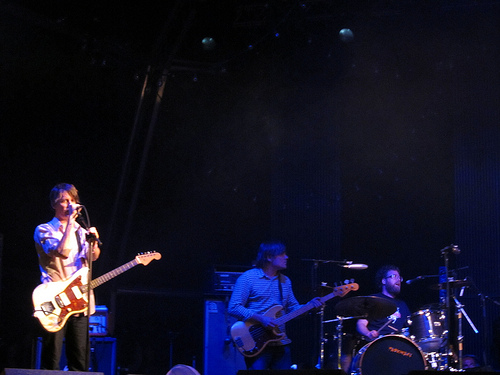
Wowee Zowee became, and still remains my favorite album by the band so I was of course ecstatic when I found out they were playing the Reading Festival that summer. Finally I would get a chance to see my favorite band perform my favorite album. I’d see Spiral (Scott to his mother) rip through the awesome guitar solo in “Rattled By The Rush” and Bob scream his way through “Serpentine Pad” – oh how awesome this was going to be. But on that balmy summer’s night in Berkshire, things didn’t go according to plan. Pavement had a shocker – sound problems and power cuts meant that despite being fairly close to the front, I barely heard a thing. The band didn’t seem too put off and still hurtled around the stage hitting whatever they could with sticks to make as much noise as possible but my first and sadly only time I would see Pavement turned out to be a bit of a damp squib.
In 1997, some eighteen months after the festival debacle, I was still playing Wowee Zowee pretty much every day. I had entered the world of work and could be found late at night stacking shelves at my local supermarket, air-guitarring and drumming around the aisles after finding an elastic band, wrapping it around the PA system so it was permanently stuck in the broadcast position and playing the CD to an empty shop aside from a few other shelf monkeys such as myself. Great, if not slightly strange times; there’s only so much pleasure you can get from belting out “Flux = Rad” with an armful of tinned sweetcorn.
“If the signatures are checked (you’ll just have to wait!)” heralded the entrance of 1997’s Brighten The Corners. It also heralded the time where I had taken to looking as much like Steve Malkmus as was possible; whether it was on purpose I really can’t remember but my hair was now at its floppiest and my clothes had attained a thrift store vibe. Pavement videos were now being shown on MTV2 – this of course being in the days that MTV2 and MTV in general used to actually be quite good. That all seemed to change when Korn, Limp Bizkit and that godawful band with a man called Chester Bennington started to infiltrate the alternative scene. Swines.
Brighten The Corners seemed to straddle the stripped-down production of Wowee Zowee and the slightly too glossy Crooked Rain… but it seemed to work. The fact that the length of the album was close to that of its predecessor and yet contained half a dozen fewer tracks didn’t bode too well for me. Where were the killer 2 minute songs? Certainly not here – only one song under 3 minutes in fact!
On first listen, it was Spiral Stairs’ two offerings that were the stand out for me. “Date with IKEA” was pure Pavement; slightly out-of-tune harmonising, dirty bass and guitar sounds and this was definitely a tune that only Stairs could carry off. You know when I said that Slanted and Enchanted was a “grower” about 5 minutes ago? Well disregard that completely. If there ever was a Pavement album that could be classed as a “grower” then it is Brighten The Corners. The benefit of hindsight is a wonderful thing. I would play it occasionally, but would still be playing the older albums more readily; so much so in fact that I only really deemed it as a great album just before its follow up – Pavement’s final album – Terror Twilight was released.
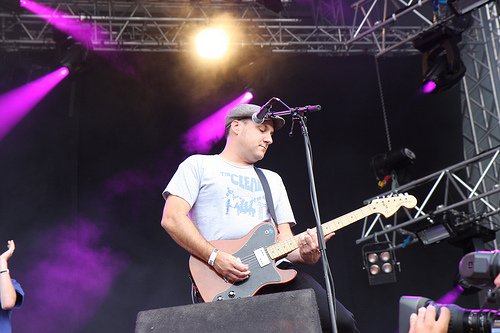
Given that the title of this article (oh, who am I kidding? Essay) proclaims that I was a teenager at the time all this was happening means I should really stop now. “YES! PLEASE!!!” I hear you say. But just hear me out. Pavement’s last was released shortly after my 21st Birthday in June 1999. By this time I had moved away from the South Wales Valleys and was now living with my soon-to-be fiancée in a flat on an estate in London. I had a job making price lists for perfume counters in department stores. I had shaved off my Malkmus hair due to the fact that it had started falling out of its own accord. In short, I had changed. I had discovered a new record label that seemed to be able to do no wrong. Polyvinyl Records was home to Mates of State, Aloha and Rainer Maria amongst many other amazing bands. Pavement had taken a back seat and Terror Twilight didn’t get the recognition at the time that it truly deserves today.
It’s not exactly a sad end to the story. I still love Pavement and I always will, but during my teenage years there was nothing that could touch them. If they hadn’t had recorded and released Crooked Rain in the way that they did and at the time that they did then it could only be described as a faultless discography. The special re-packaged, unseen material style re-releases have all been bought, MP3d and added to an iPod that is now 32,000 songs strong; 300 of which are by Pavement.
There you go – that’s 10 years of my life being obsessed with a band from Stockton, CA summed up in one handy bite-sized (2000 word) essay. I’ll leave you with my favorite lyric by Malkmus and Co.
“Show me a word that rhymes with Pavement and I won’t kill your parents and roast them on a spit.”
FIN
